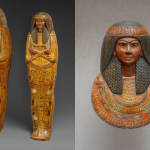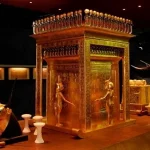The Antonine Fountain

The Antonine Nymphaeum at Sagalassos
An Architectural Marvel of Roman Urban Design
Constructed between 160 and 180 CE, the Antonine Nymphaeum was a monumental single-story fountain located on the north side of the Upper Agora. Stretching approximately 28 meters long and rising nearly 9 meters high, it stood as one of the most opulently decorated structures in the city.
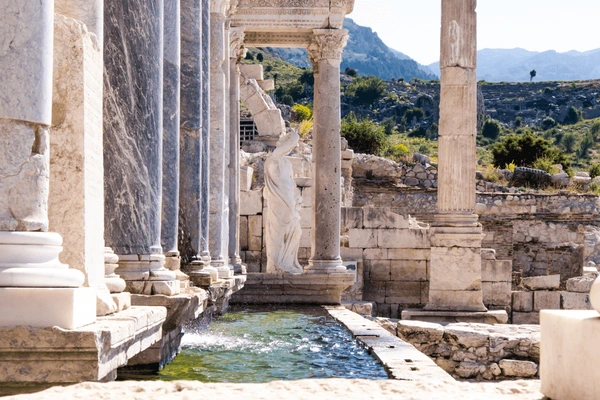
Rich in Material and Decoration
The fountain was built using seven different types of stones, including Afyon marble, creating dazzling visual effects whenever light interacted with flowing water. Its design featured six tabernacle-like projections (aediculae), each supported by Corinthian columns—projecting varying degrees from the façade.
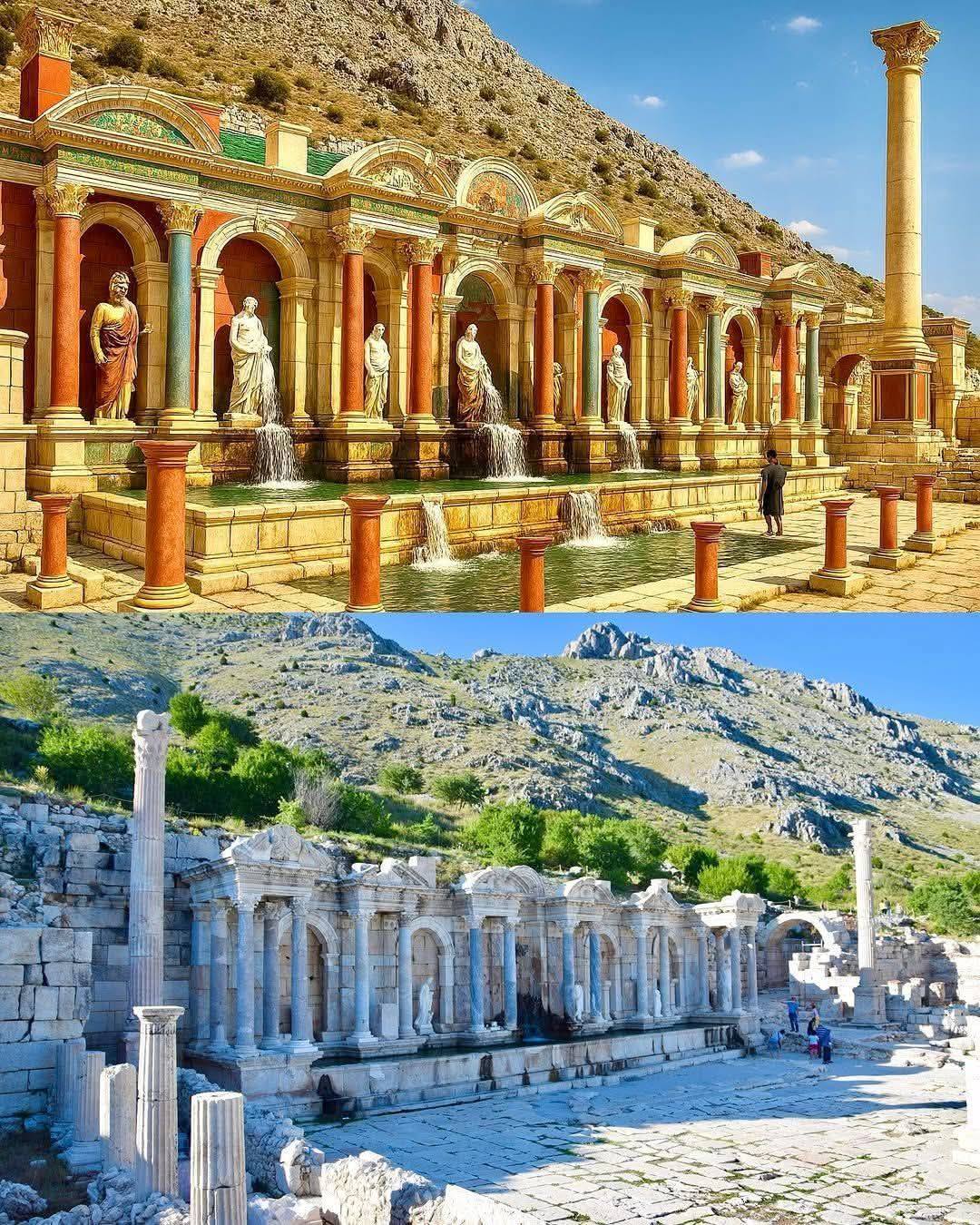
Elaborate Sculptural Program
Within its niches and aediculae were statues—some depicting deities like Dionysos with a satyr, as well as figures such as Nemesis, Asklepios, and possibly Apollo—with only partial remains surviving. Ornate details included tendril friezes, theater mask motifs, thyrsus staffs, and shell (concha) elements painted with red and white fascia bands. The sheer variety of colored stones and architectural ornamentation made this fountain a prime example of the visual grandeur favored during the Antonine era..

History of Collapse and Restoration
Following significant earthquake damage around the 6th century CE—and eventual collapse around 650 CE—the site lay buried for centuries. Excavations between 1993 and 1996 uncovered remarkably well-preserved structural elements and an intact podium, enabling a restoration project beginning in 1998. Using anastylosis (reassembling original pieces), by 2010 the fountain had been reconstructed, reconnected to its ancient spring water source, and made fully operational once again.
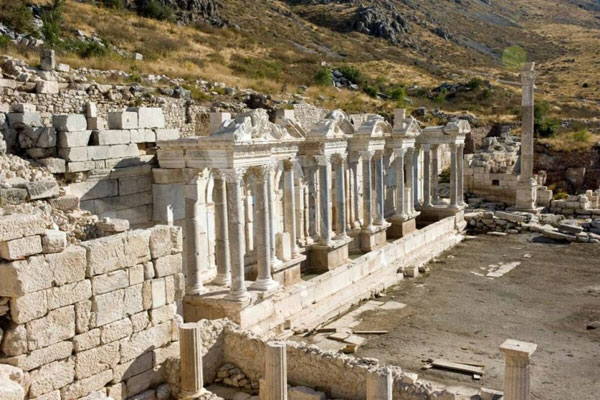
Cultural and Historical Significance
Believed to have been commissioned by Titus Flavius Severianus Neon and his wife—prominent benefactors of Sagalassos—the fountain symbolized both civic pride and dynastic prestige. As a nymphaeum—a sacred and civic monument dedicated to nymphs—it served not just as a water display but also as a place of social gathering and aesthetic delight. Today, it stands as one of the most impressive restored monuments within Sagalassos—a testament to Roman architectural splendor and successful heritage conservation.






